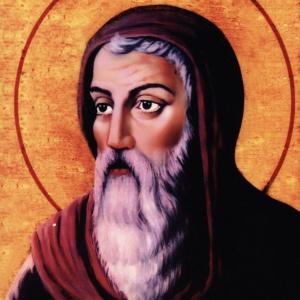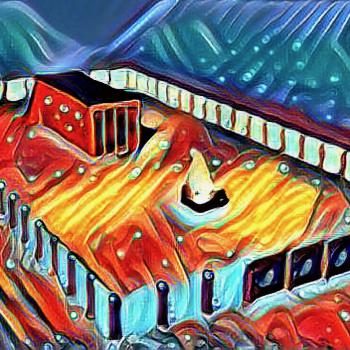There is a revealed beauty in the language that God gives us to describe Him, as we enter into the processes of understanding Him more.
Joel Green, a Theologian, says:
“The texts of the NT were formed in the cauldron of community formation and witness; as a consequence, interpretation of those texts that does not lead to vital discipleship and mission hardly has a claim to being New Testament interpretation.”[1]
This is a modern-day Theologian from the Ivy League telling us that if our Bible does not lead us to disciple others, and lead us to form a community of faith, then we’re not interpreting it right.
Video, The Trinity: Recognizing Beauty in Doctrine
i. Consider a doctrinal statement in the New Testament
This is a passage that I call a doctrinal statement in the NT community, Galatians 3.27-28:
for all of you who were baptized into Christ have clothed yourselves with Christ. There is neither Jew nor Greek, slave nor free, male nor female, for you are all one in Christ Jesus. (NIV, 1999)
We are going to consider a Pentecostal Church of God (PCG) point of doctrine, in light of the Early Church.
ii. Part of the current Doctrinal Statement of the PCG is on the Godhead or the Trinity
2. The Godhead
“We believe there is but one true and living God, who is everlasting, infinite in power, wisdom and goodness; that He is the Creator of all things, visible and invisible, and Preserver of all things (Romans 1:20; Colossians 1:16). In the unity of this Godhead, there are three persons of one individual essence, who are co-equal, co-existent and co-eternal; namely, the Father, the Son and the Holy Ghost (Matthew 3:16, 17; 28:18, 19; 2 Corinthians 13:14; John 1:1,2, 18; 10:33; 14:26; 15:26; Philippians 2:6; Hebrews 9:14).”[2]
In the unity of this Godhead, there are three persons of one individual essence
iii. Our Doctrinal Statement supports the Nicene Creed
The Nicene Creed is a summarizing work, completed in the Niceno-Constantinopolitan Creed (381 AD). It goes back before this date to the Theologians who were working on it. One of them was Athanasius. Then there were three (four if we include one of the sisters) called the Cappadocian Fathers. Athanasius is a forerunner.
They argue for a couple of terms in describing the Trinity. Think about these terms in relation to our doctrine:
In the unity of this Godhead, there are three persons of one individual essence
The phrase three persons comes from the Greek word that is used at that time: hypostases, actual personalities or persons.
There are three hypostases, but there is one individual essence: homoousios, one substance.
There are many ways to describe the Trinity, like an egg, or a three-leaf clover. However, when you think about essence, and three distinct things at the same time, consider water, ice, and vapor. They’re all three H20, all one essence, but they’re just three different forms.
iv. Athanasius is using these terms before people are talking about the Trinity
 St. Athanasius the Apostolic | Coptic Church | Public Domain
St. Athanasius the Apostolic | Coptic Church | Public Domain
Athanasius is using these terms to fight a heresy in his area. He calls a gathering of church leaders in his region to work on it. The heresy he’s fighting is known as Sabellianism.
Today we call it modalism: Unitarians, Oneness, and some Apostolics. Some of these groups have a slight problem with the doctrine of the Trinity.
One example of modalism is that God shows up in different ways in different times. Maybe God is wearing a different mask at various times. Some believe that God in the Old Testament, becomes Jesus in the Gospels, and then the Holy Spirit now. So there is a progression, a further revelation of who God is, but He is one.
This is not exactly Trinitarian Theology. Athanasius develops a Trinitarian doctrine directly from the Greek.
“The purpose of putting forth this new idea was to contradict Sabellian modalism by making clear that Father, Son, and Holy Spirit, though one substance (homoousios), are not the same identical person or subsistence. They are three distinct persons (hypostases) and not merely three masks or manifestations or aspects of the one personal God, as Sabellianism averred.”[3]
v. If you only relate to God from the Old Testament, do you really know Jesus?
Can you really know Jesus if you think He is somehow God the Father?
Can you really understand half of what Jesus says when He says, all I’m doing is the will of the Father (Matthew 7.21; 12.50; John 5.30; 8.28)?
Can you understand what Jesus says when He says, not my will, but Yours be done (Matthew 26.39, 42; Mark 14.35, Luke 22.42)?
Can you really understand that He was sent by the Trinity? God sent forth His Son as the ambassador, or the apostle, to Earth (Galatians 4.4).
These Scriptures simply don’t make sense if you hold to a doctrine like Sabellianism, or modern-day modalism.
vi. The sheer beauty of this PCG doctrinal statement is amazing:
In the unity of this Godhead, there are three persons of one individual essence
We affirm thoughts that go back to the early creeds that hold all Christians together.
[1] Joel B. Green, “The Practice of Reading the New Testament,” in Hearing the New Testament: Strategies for Interpretation, ed. Joel B. Green (Grand Rapids, MI: Wm. B. Eerdmans, 1995), 413. [2] “PCG Beliefs: Doctrinal Statement,” Pentecostal Church of God, last modified 2013, accessed March 25, 2017, http://www.pcg.org/beliefs. [3] Roger E. Olson, The Story of Christian Theology: Twenty Centuries of Tradition & Reform (Downers Grove, IL: IVP Academic, 1999), 166.













